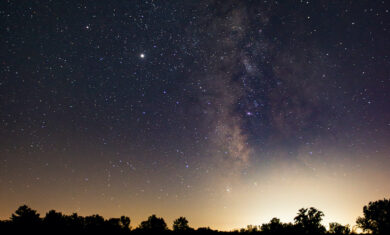Adler Skywatch: June 2025
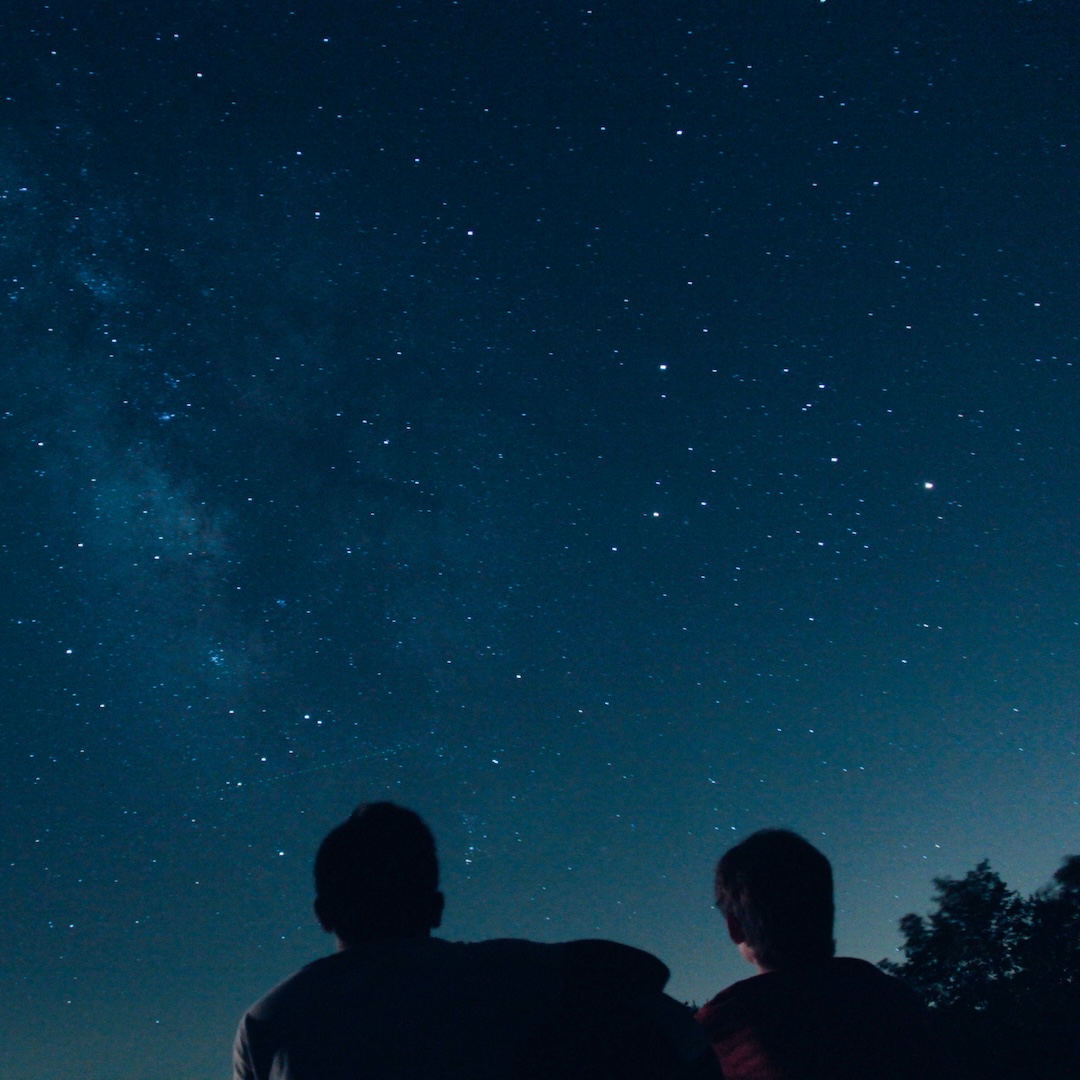
Header Image: Two people stargazing under the summer sky.
The longest day of the year in the northern hemisphere may get 15 hours of daylight, but it’s still only 24 hours long—and it takes place this month, June 2025.
The Summer Solstice
“The longest day” in this case means the most amount of daylight in a single 24-hour day. The summer solstice in the northern hemisphere occurs this month, on June 20 at 9:42pm CDT. On the solstice, the Sun reaches its most northerly point in the sky for the year, from Earth’s viewpoint.
Daylight Hours On The Summer Solstice
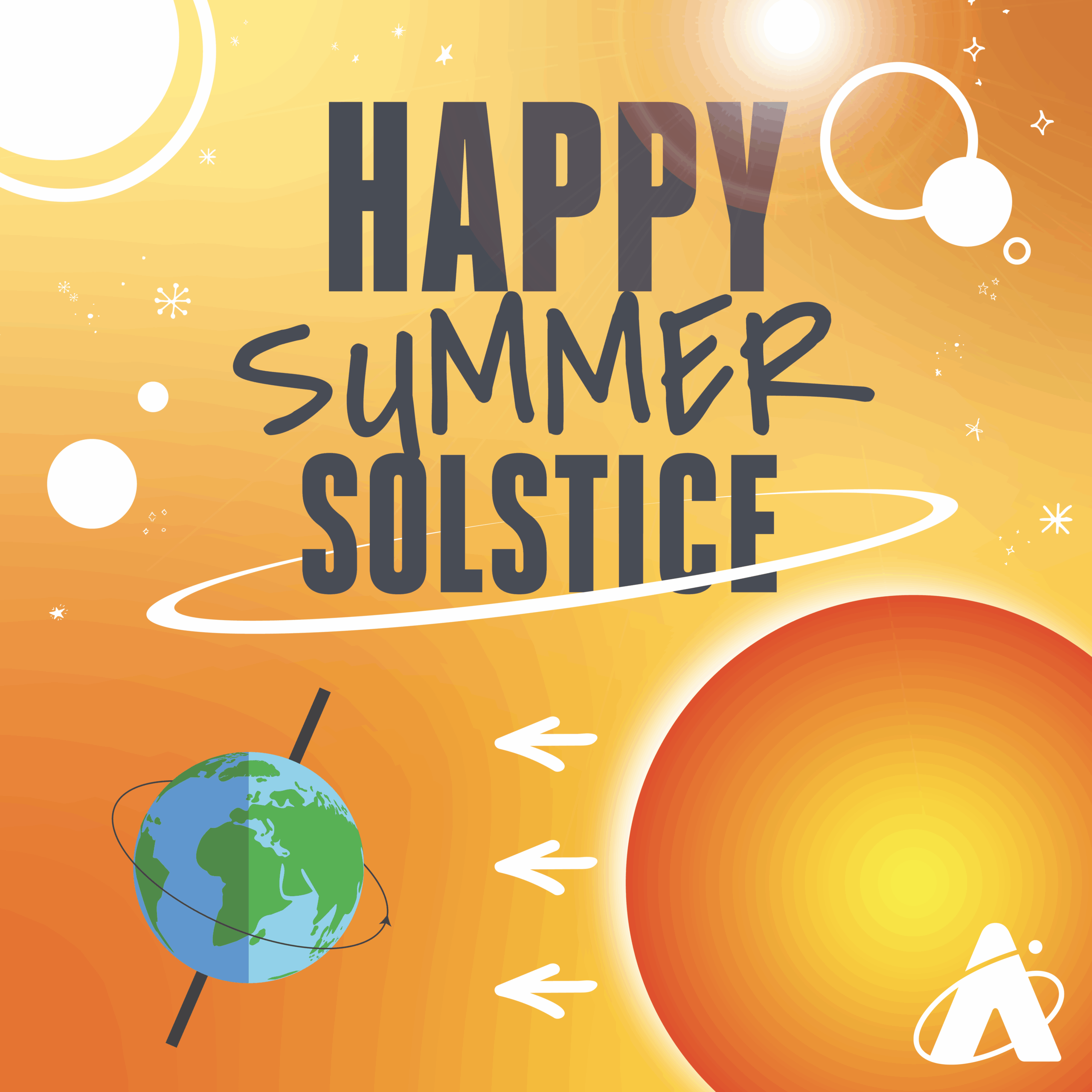
Since the Sun reaches its highest point, it means that it’s above the horizon for a longer period. How long? This year in the Chicago area, it’s 15 hours and 14 minutes on June 20, with sunrise at 5:15 am and sunset at 8:29 pm.
What Planets Are Visible In June 2025?
Where To Find Jupiter
The first three evenings of the month, the bright planet Jupiter sets in the west-northwest a little over an hour after the Sun. Even though it’s nearly minus-2 magnitude this month, you’ll need a clear view of the horizon to see it. After June 3, it will be very difficult to spot Jupiter in the Sun’s glare. Start looking for it again in the second-half of July, before sunrise in the east-northeast.
A Chance To See Mercury
Possibly the best opportunity of the year to spot the planet Mercury is this month, about 45 minutes after sunset, starting on June 12. There’s a short window of time to look for the planet closest to the Sun. Try looking low in the west-northwest around 9:15 pm. Mercury gets a little higher each evening, and thus easier to see, until June 30.
The evening of June 26, Mercury appears a few degrees to the left of an almost invisible waxing crescent Moon, less than two days old. About the same amount of distance to the right, is the bright star Pollux, the brightest star in the constellation Gemini. And about the same distance to the right of Pollux is Castor, the second-brightest star in Gemini. Mercury shines brighter than either Pollux or Castor this month.
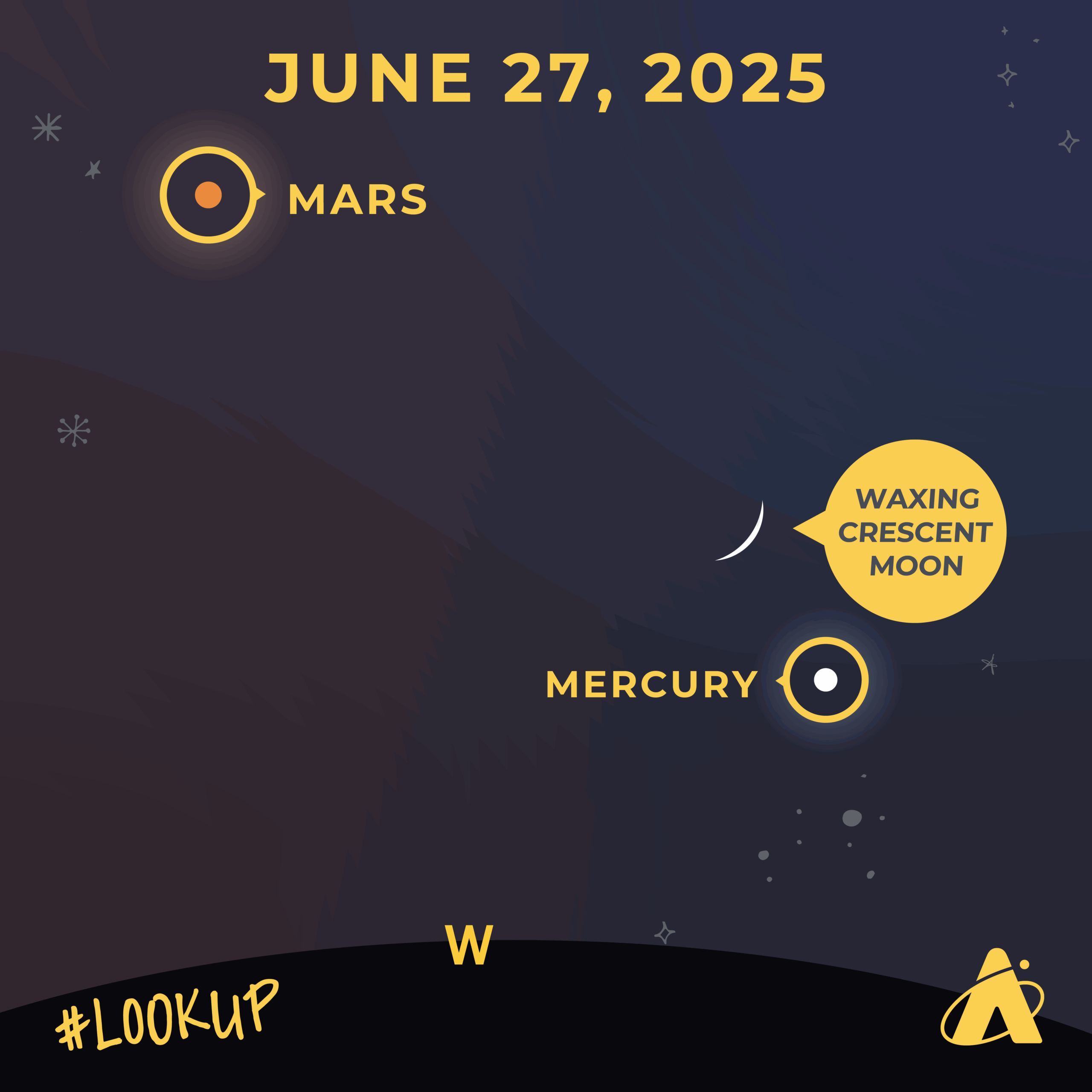
How To See Mars This June
If Mercury is too low to spot from your location, try looking a little higher in the early-evening sky for the planet Mars. The evening of June 1, it’s about 30–40 degrees high in the western sky. Look a little to the upper-left of Mars to spot a slender waxing crescent Moon.
Mars gets a little lower in the western sky as the evenings pass. On the evenings of June 15–18, Mars appears one degree or closer to Regulus, the brightest star in the constellation Leo. Mars and Regulus are nearly the same brightness—about 1.4 magnitude—but you should be able to tell them apart by color. Regulus is a blue-white star, while Mars is slightly red (true to its nickname, the Red Planet).
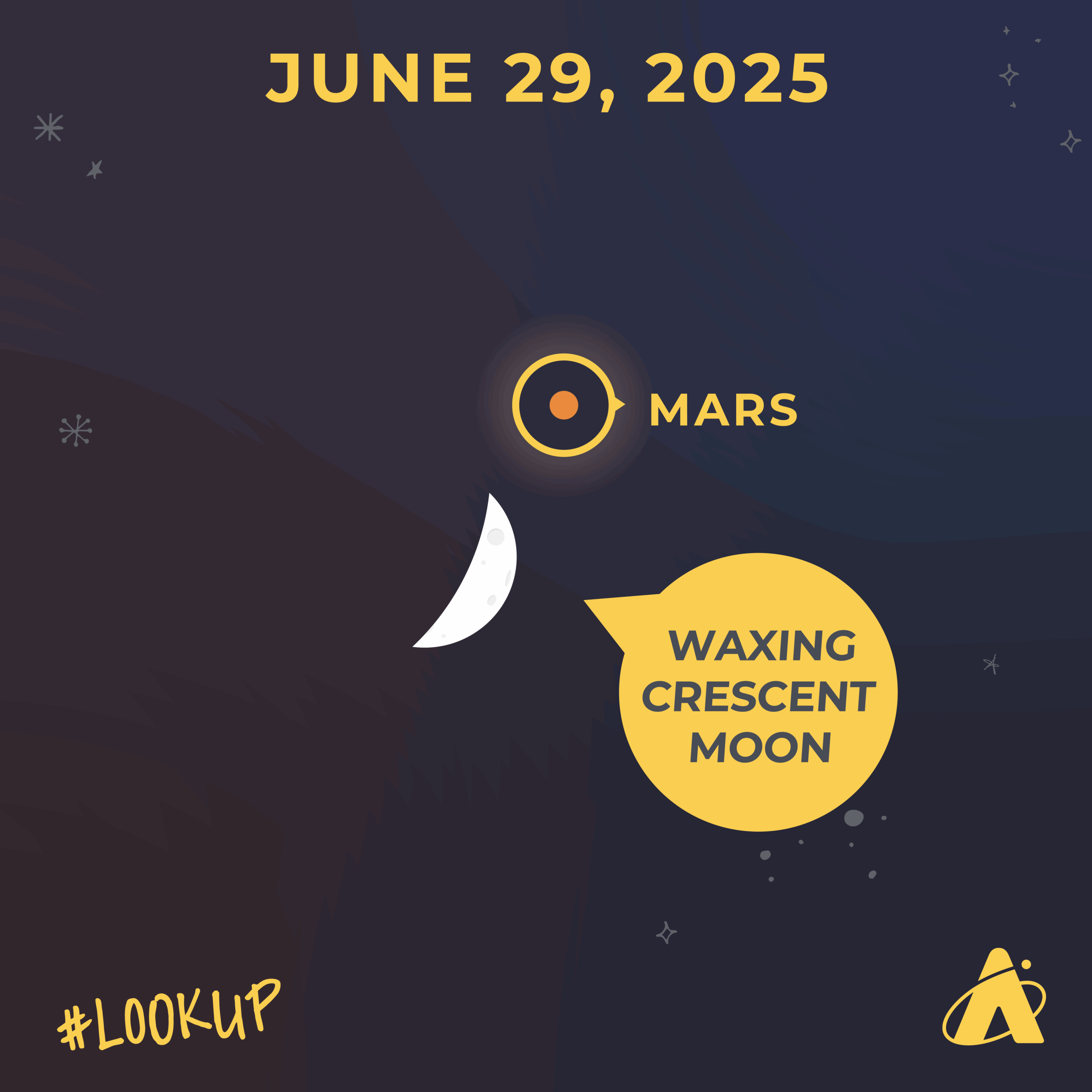
On the evening of June 29, Mars appears less than a fifth of a degree from the terminator—the line between the dark and light sides—of a waxing crescent Moon. Mars is not quite occulted, or covered, by the Moon, but it’s very close.
Mars sets shortly after 12:30 am at the start of the month, and shortly after 11:00 pm by month’s end.
Early Morning Summer Planets
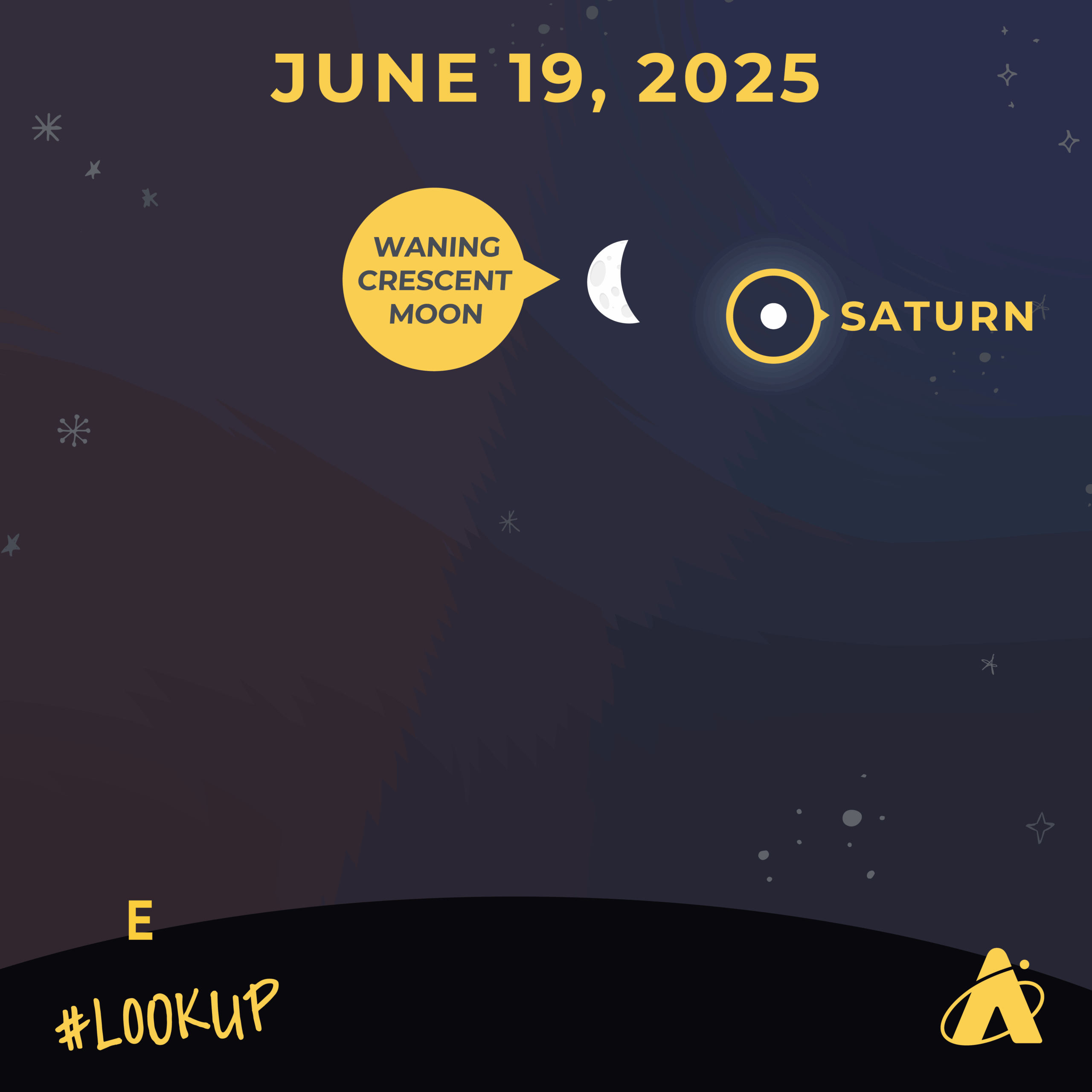
You’ll need to wait until the pre-dawn darkness to start looking for more planets this month. Saturn is the first one up, rising in the east around 2:30 am at the start of the month, and shortly after midnight by month’s end. Its brightness is at roughly first-magnitude in June. The morning of June 19, a waning crescent Moon appears a few degrees to the left of Saturn. By around 5:00 am, Saturn is roughly 30–40 degrees above the southeastern horizon, and morning twilight likely makes the planet too faint to see.
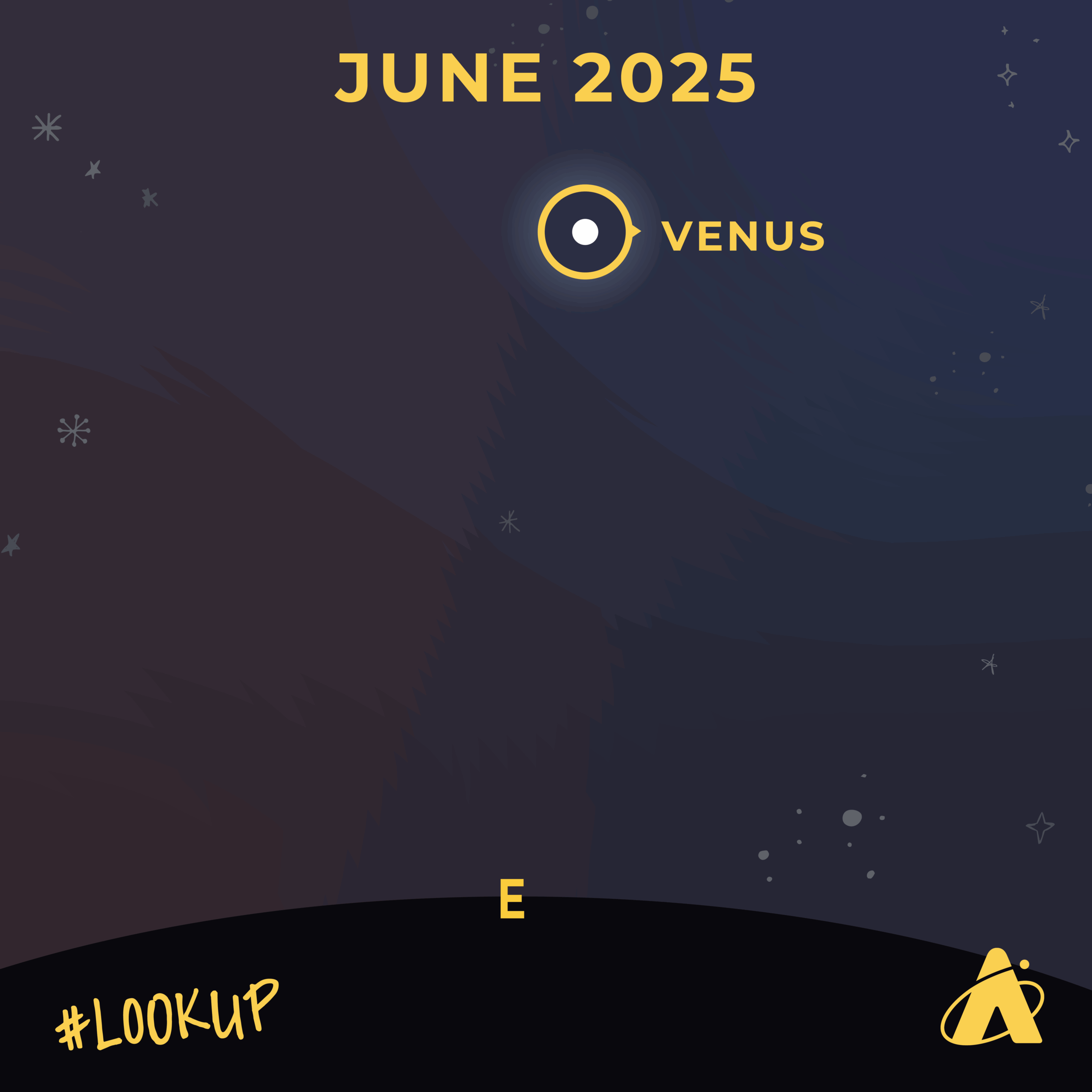
On clear mornings this month, you’ll have no problem seeing the planet Venus. The brightest planet rises in the east around 3:30 am at the start of the month, and in the east-northeast around 3:00 am by month’s end. It shines brighter than minus-four magnitude and is easy to spot. The morning of June 22, it’s about five degrees to the lower-right of a slim, waning crescent Moon. You should be able to see Venus up to 30 minutes before sunrise each morning this month, as it stays fairly close to the same place in the sky when viewed at the same time each day.
Moon Phases
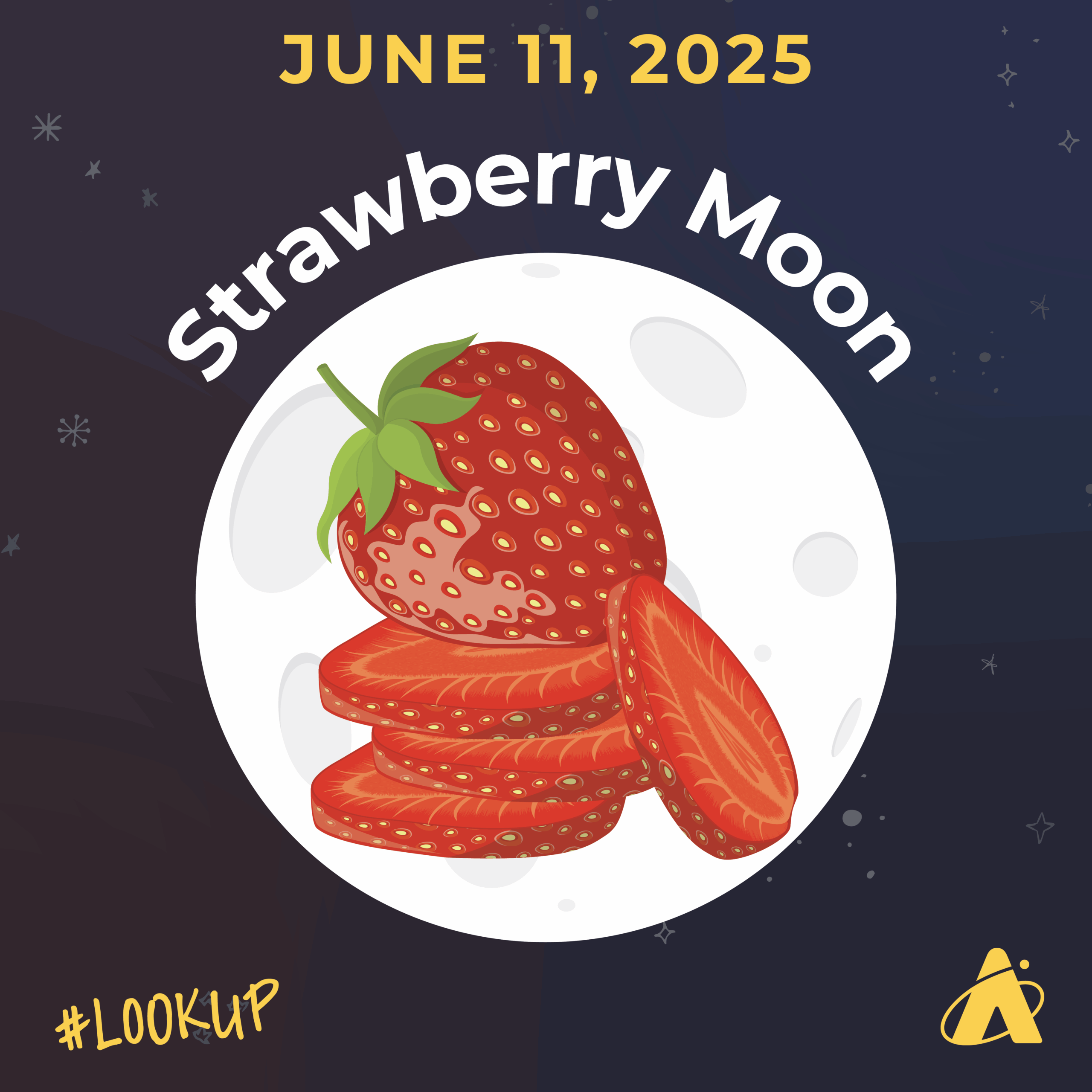
First Quarter Moon: June 2
Full Moon: June 11
Last Quarter Moon: June 18
New Moon: June 25
Please note: these descriptions are for the Chicago area, using Central time.
Subscribe To Skywatch Wednesday This June
Tour the sky with the Adler Planetarium’s Theaters Manager, Nick, in Skywatch Wednesday. Nick uses cutting edge visualizations, NASA images, and astrophotography to show you what you can see in the night sky throughout the year.
Check out Nick’s latest episode for your guide to spring stargazing and details about last month’s total lunar eclipse!
Learn From Our Astronomy Educators
Watch recaps of Sky Observers Hangout livestreams this June! Learn how to observe upcoming cosmic happenings, enhance your astrophotography skills, and see celestial objects through a telescope virtually with our astronomy educators.
In the latest episode, Michelle and Hunter are joined by astrophotography expert, Nick Lake, and share everything you need to know about taking pictures of the night sky. They also show you views of galaxies through the 24 inch telescope in the Doane Observatory!






